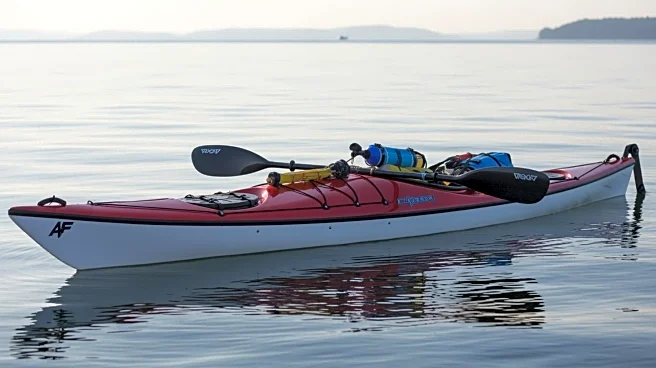What's Happening?
Advanced kayak rigging techniques are essential for enhancing stability, performance, and comfort during kayaking adventures. These techniques involve customizing the kayak with equipment and modifications
tailored to specific paddling styles and environments. Key rigging strategies include precise foot brace customization, advanced cockpit ergonomics, optimized paddle holders, and enhanced directional control with skegs and rudders. Proper rigging not only improves performance but also contributes significantly to safety and comfort, allowing kayakers to navigate challenging water conditions more effectively.
Why It's Important?
Investing in advanced rigging techniques offers numerous benefits, including superior stability, improved performance, and greater comfort. Custom foot and thigh braces, proper weight distribution, and ergonomic adjustments reduce the risk of capsizing and enhance confidence in rough waters. Enhanced control through rudders and skegs allows for longer paddling distances with less fatigue. Additionally, secure storage for safety gear and better visibility features contribute to safer paddling experiences, making advanced rigging a valuable investment for serious kayakers.
What's Next?
As kayaking technology continues to evolve, further innovations in rigging techniques and equipment are expected to enhance the sport's accessibility and appeal. The integration of technology, such as GPS and communication devices, may also play a role in improving safety and navigation. Ongoing advancements in materials and design will likely lead to more efficient and versatile kayaks, catering to a wider range of paddling preferences and environments.
Beyond the Headlines
The emphasis on advanced rigging highlights the importance of customization and adaptability in outdoor sports. As kayakers seek to optimize their equipment for specific conditions, the sport may influence broader trends in outdoor gear design and innovation. Additionally, the focus on safety and performance underscores the need for responsible and informed participation in water-based activities.











